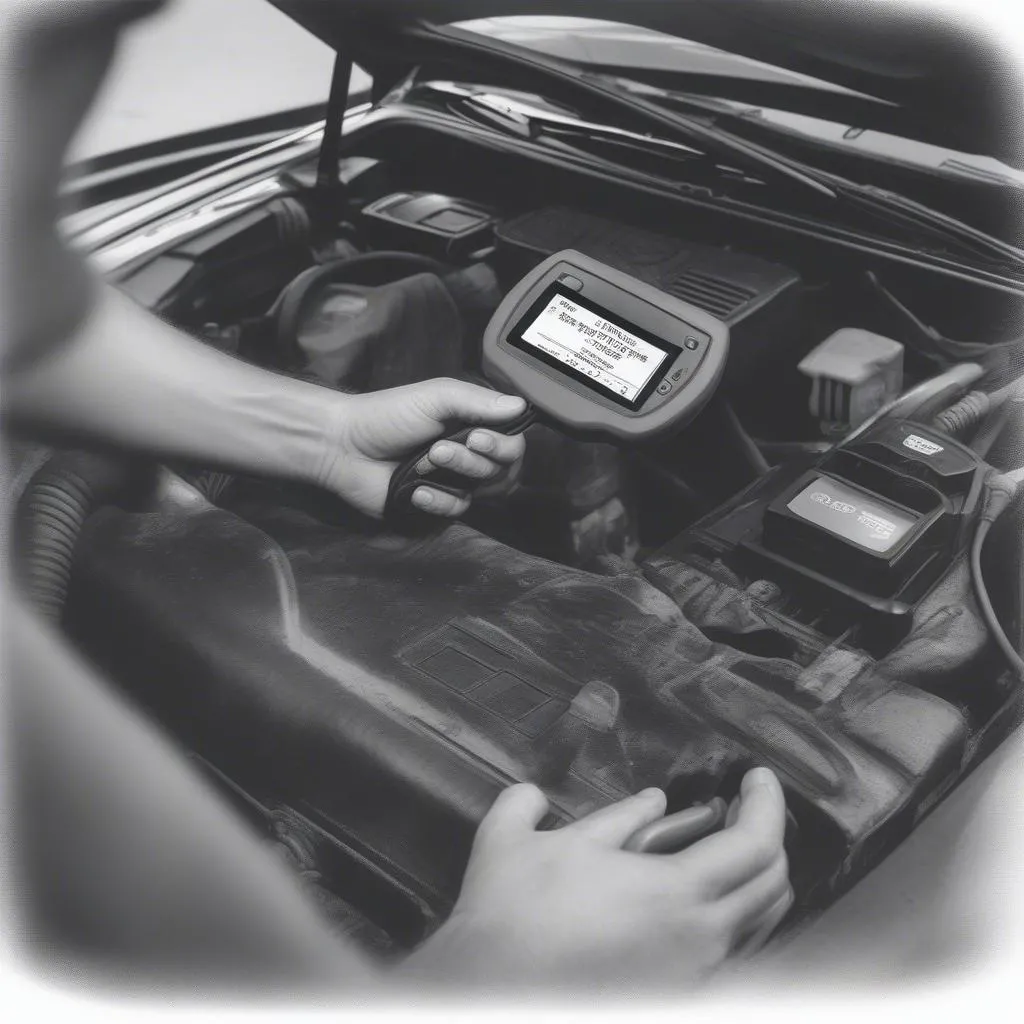Ever felt like you were searching for a needle in a haystack when trying to locate your car’s OBD port? Don’t worry, you’re not alone. Picture this: you’re on a scenic drive through the Rocky Mountains, your check engine light decides to have a party on your dashboard, and you’re eager to plug in your trusty OBD scanner. But wait, where is that elusive port hiding?
This comprehensive guide will be your treasure map, helping you navigate the intricacies of Obd Port Locations and answer all your burning questions. Let’s dive in!
What is an OBD Port and Why Should I Care?
Before we embark on our quest to find the OBD port, let’s understand what it is and why it’s more important than you might think.
From a Mechanic’s Perspective:
Imagine the OBD port as your car’s communication hub. Just like how we use language to convey our thoughts, your car uses the OBD port to communicate with diagnostic tools. These tools, like the dealer scanner for European cars, are essential for understanding your car’s health and identifying any potential issues.
From a Technical Standpoint:
The OBD port, technically known as the On-Board Diagnostics port, is a standardized 16-pin connector. It grants access to various systems within your vehicle, allowing mechanics and car enthusiasts alike to:
- Retrieve Diagnostic Trouble Codes (DTCs): Think of these as your car’s way of signaling that something’s amiss.
- Monitor Real-Time Data: See how your engine, transmission, and other critical components are performing.
- Run System Tests: Verify the functionality of various systems.
The Economic Angle:
Knowing the location of your OBD port can save you time and money. Imagine taking your car to a mechanic for a simple check engine light diagnosis, only to be charged an exorbitant fee for something you could have easily checked yourself. With the right OBD scanner and the knowledge of your port’s location, you can empower yourself to diagnose and potentially resolve minor issues.
Unmasking the Elusive OBD Port: Where to Look
Now, let’s pinpoint the location of this automotive treasure. While the exact location can vary slightly depending on the make, model, and year of your vehicle, here are some common hiding spots:
- Under the Driver’s Side Dashboard: This is the most popular hiding spot, often tucked away near the steering column or behind a small panel.
- Inside the Center Console: Some manufacturers prefer a more discreet approach, concealing the port within the center console compartment.
- Near the Fuse Box: The area around the fuse box, either under the dashboard or in the engine compartment, can also harbor the OBD port.
If you’re having trouble locating it, refer to your car’s owner’s manual. It usually includes a diagram specifically highlighting the OBD port location.
Common Obd Port Location Questions Answered
Here are some questions our readers frequently ask:
Q: Is the OBD port location universal?
A: While most vehicles have a standardized 16-pin OBD-II port, the location can differ. It’s like finding your favorite coffee mug in a new kitchen – it’s there, but its exact location might require a little exploration.
Q: My car is a 2001 Honda Accord. Where can I find the OBD port?
A: For a 1997 Honda Accord, you’ll likely find the OBD port under the driver’s side dashboard, near the hood release lever. You might need to remove a small panel to access it. If you’re looking for information about other car models, you can check out our guides on the 2013 Hyundai Elantra OBD port location or the 2016 Mazda 6 OBD port location.
Q: Can I use any OBD scanner with my car?
A: It’s generally recommended to use a scanner compatible with your car’s make and model for optimal results.
 OBD Scanner Connected to Car
OBD Scanner Connected to Car
Tips for a Smooth OBD Port Experience
Here are some bonus tips for navigating the world of OBD ports:
- Keep it Clean: Just like any other connector, dust and debris can interfere with the OBD port’s functionality. Keep it clean using compressed air or a cotton swab.
- Handle with Care: Avoid bending or damaging the pins when connecting or disconnecting your OBD scanner.
- Seek Professional Help: If you encounter any difficulties locating or using the OBD port, don’t hesitate to consult a qualified mechanic.
 Mechanic Using OBD Scanner on Car
Mechanic Using OBD Scanner on Car
Beyond Obd Port Location: Exploring the World of Automotive Diagnostics
Do you have questions about the 2013 Escape OBD port or maybe you’re curious about the Citroen C4 2010 OBD port location? We’ve got you covered. Explore our website for a wealth of information on various car models and their OBD port locations.
Need help with setting up your diagnostic tools? Our team of automotive experts is just a WhatsApp message away. Reach out to us at +84767531508 for 24/7 support.
The Final Word
Remember, understanding your car’s OBD port location empowers you to take control of your vehicle’s maintenance and potentially save money in the long run. So, embrace your inner automotive explorer, grab your owner’s manual, and unlock the secrets hidden within your car’s dashboard!
Do you have any interesting OBD-related stories? Share them in the comments below! And don’t forget to explore our other articles for more automotive insights and tips.